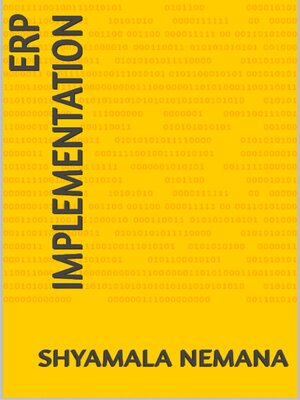
Sign up to save your library
With an OverDrive account, you can save your favorite libraries for at-a-glance information about availability. Find out more about OverDrive accounts.
Find this title in Libby, the library reading app by OverDrive.



Search for a digital library with this title
Title found at these libraries:
| Library Name | Distance |
|---|---|
| Loading... |
The initials ERP originated as an extension of MRP (material requirements planning; later manufacturing resource planning) and CIM (Computer Integrated Manufacturing). It was introduced by research and analysis firm Gartner in 1990. ERP systems now attempt to cover all core functions of an enterprise, regardless of the organization's business or charter. These systems can now be found in non-manufacturing businesses, non-profit organizations and governments.
To be considered an ERP system, a software package must provide the function of at least two systems. For example, a software package that provides both payroll and accounting functions could technically be considered an ERP software package
Examples of modules in an ERP which formerly would have been stand-alone applications include: Product lifecycle management, Supply chain management (e.g. Purchasing, Manufacturing and Distribution), Warehouse Management, Customer Relationship Management (CRM), Sales Order Processing, Online Sales, Financials, Human Resources, and Decision Support System.







